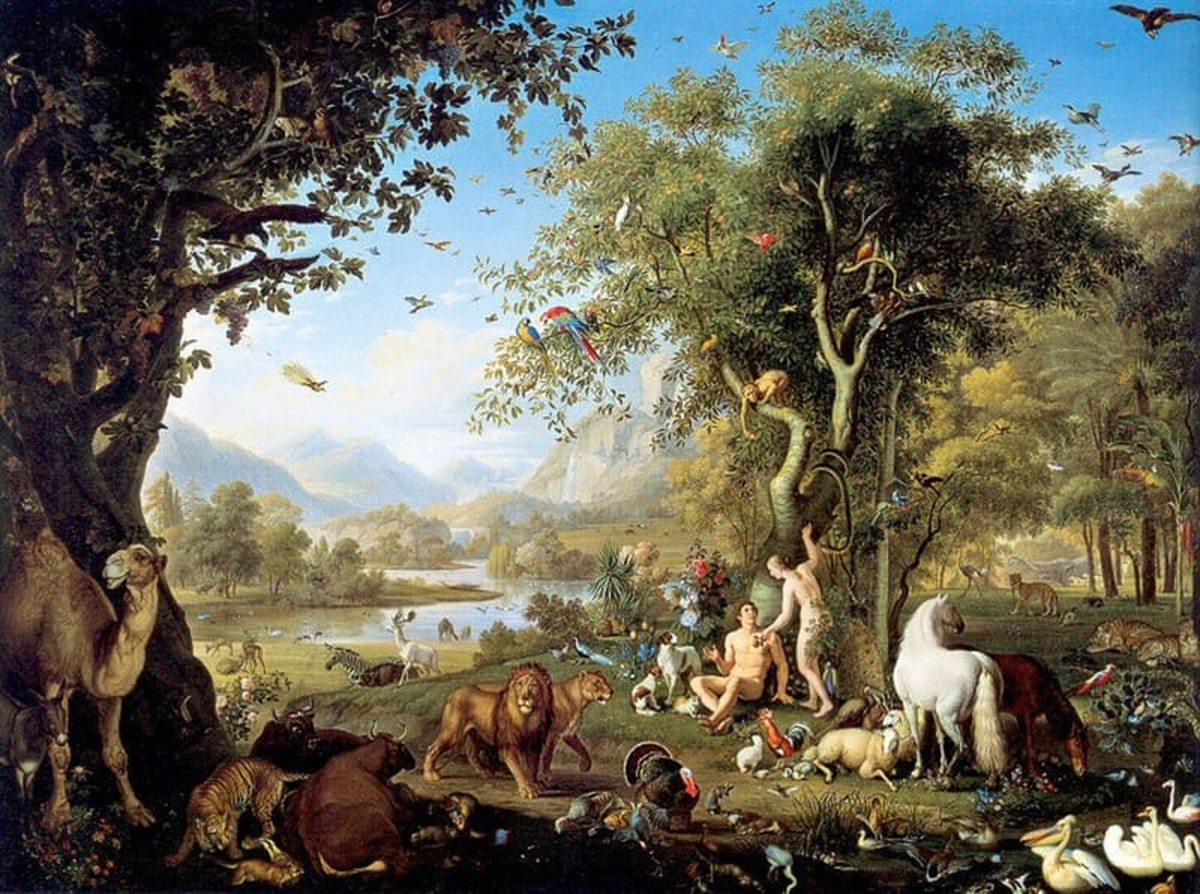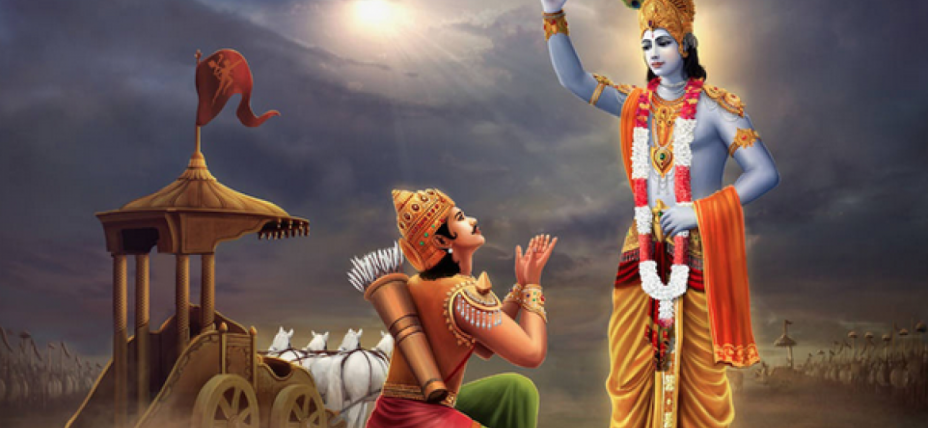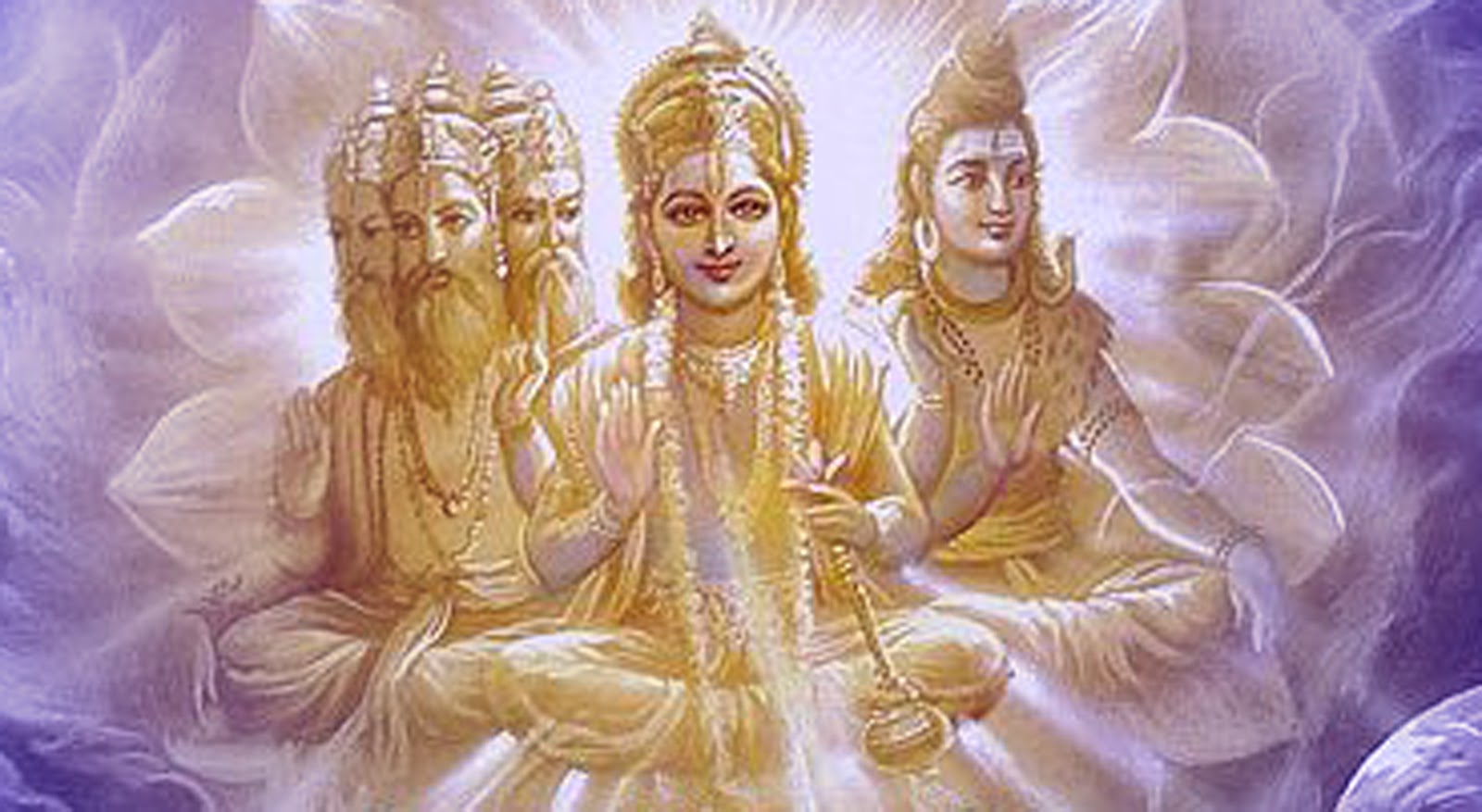for English click or tap here or just scroll down patiently 😉
Dolgok, amiket bárcsak korábban tudtam volna #4 – Az utolsó démon
Nagyon fontos megjegyzés: Ha ebben a hónapban csak egy cikket olvasol el türelmesen – ez legyen az.
Mondom: türelmesen.
És igen – van humorérzékem. Hamarosan meglátod.
Nemrég szembejött egy Facebook post
“-Sokáig tart még?
kérdezte a boldogtalan – mosoly nélkül
-Sokáig
válaszolta a boldog – mosollyal”
—
Biztos tudod, hogy legalább két Biblia van.
Az egyik a Biblia, amit ismersz – a másikat úgy hívják a “hindu Biblia” ami valójában csak egy becenév – és biztos még lehetnek más hasonló könyvek is.
Ezek az írások valójában bölcsesség-gyűjtemények: nem mindig szó szerint értendő eseményekről, sokkal inkább örök bölcsességekről.
Az egyik ilyen történet, amit mindenki ismer:
Ádám és Éva a Paradicsomban. Esznek a Tudás fájáról. El kell, hogy hagyják az Édent. És Isten egy kerubot kér meg, hogy lángoló pallossal vigyázza az Örök élet fáját. Miért is? Tudod? Mert ha Ádám és Éva arról is enne – ugyanolyan lenne, mint Isten.

Veheted ezt a sztorit szó szerint. Vagy mint egy hasonlatot – amit bölcs emberek több 1000 évvel ezelőtt írtak.
Nos. Az “ettek a tudás fájáról” valójában egy hasonlat: ha Te, mint állat, nem tudsz “dolgokról” – ugyanolyan vagy mint a többi állat: a Paradicsomban élsz.
Mikor tudni kezdesz: rengeteg dolgot tudsz: többek között, hogy egyszer majd meghalsz. Ezzel viszont: azonnal elhagyod a Paradicsomot.
És van tovább is: ha mindent tudnál ÉS örökké élnél: Te is Isten lennél.
Csodaszép, ugye?
Látod? A bölcsesség – szép.
A legfontosabb – és nagyon hasonló – üzenet amit ezek a bölcs emberek küldenek nekünk a múlt mély kútjából egy másik dolog.
Ez az amit már kisgyerekként is tudnunk kellett volna. Meg a szüleinknek is. Sőt: a szülők próbálják gyakorolni – csak nem nagyon megy.
Na erről szól ez a cikk.
Jézus a sivatagban 40 napig – és az emberiség démonjai – akiket elfogad; kivéve egyet
Van egy izgalmas dolog a Bibliában: Jézus és 40 eltöltött napja a sivatagban, miközben megküzd az emberiség összes démonjával – az összes démonnal, egy démont kivéve.

A Bibliában a démonokat (és rossz szellemeket) sokszor említik.
Ha nem hiszed – kattints ide – ez a cikk a témáról (hányszor említik a démonokat a Bibiliában Jézussal kapcsolatban) – ez a hivatkozott link egy Chicagói Egyetemi professzortól van – az meg ugyebár az egyik kedvenc iskolám. Úgyhogy csak jó lehet. 🙂
Tehát – Jézus a sivatagban találkozik minden démonnal – és valami történik.
Jézus nem legyőzte a démonokat, hanem megbékélt velük. Már ez a gondolat – csodaszép – de ez egy másik cikk témája lesz majd. Merthogy a démonjaidat nem lehet legyőzni. Soha. Megbékélni meg lehet velük. Onnantól szelíd sárkányaid lesznek. De ez egy másik cikk témája lesz majd egyszer.
Nos – Jézus megbékélt az összes démonnal. Kivéve egyet.
És: hogyan kapcsolódik ez a történet a hindu Bibiliához?
Még egy kis kitérő – kis türelmet. És: meglátod: igen, van humorérzékem. Mindjárt látni fogod.
A világ egyik legismertebb csatajelenete – és kapcsolódása napjainkhoz
A Bhagavad Gita egy történet Arjuna királyról aki a hadseregét éppen ütközetbe vezeti – a saját fivérei ellen.
A Bhagavad Gita egyetlen jelenet- amit sokan a hindu Bibliának hívnak:
Arjuna király és a harca a testvére hadserege ellen. Arjunának hatalmas kérdései vannak, élet-halál helyzet, és választ kap valakitől, ott, a csatamezőn, a legnagyobb kérdésekre is.
(Lásd még: háború Oroszország és Ukrajna között – hasonló felállás, ugye? Ki mondta, hogy az emberiség tanul a hibáiból az évszázadok alatt? Úgy tűnik: nem. Újra és újra ugyanazok a jelenetek zajlanak.)
Arjunát súlyos kétségek gyötrik: harcoljon? Miért is kellene megölnie a saját fivéreit? Egyáltalán: van-e szabad akarata? Eldöntheti ő, hogy ki hal meg és ki nem?
Az egész egy rövid és csodaszép történet – egy párbeszéd Arjuna és valaki között aki a csatatérre siet és válaszokat ad neki.
Az, aki válaszokat ad Arjunának: ez a személy Krishna – aki amúgy ugyanaz a Krishna akit a nyugati világban a Krisna tudatú egyház papjai tettek híressé; Krishna a Bhagavad Gita másik fő alakja.

És hogy ne higgyük, hogy csak papok szeretik a Bhagavad Gitát: Oppenheimer, az atombomba egyik feltalálójának egyik kedvenc olvasmánya volt a Bhagavad Gita. Oppenheimer tudós volt, de beleszeretett a történetbe.
És persze Gandhi kedvenc olvasmánya is a Gita volt.
Mellékszál #1: az a személy, aki a Krishna tudatot a nyugatra hozta 70 éves volt amikor egyik éjjel megjelent neki Isten – és tudta, hogy az élete összes megtakarításából hajójegyet kell, hogy vegyen – és Amerikába utazott.
Ez itt most nem egy Krisna-tudat népszerűsítő cikk. Egyszerűen Kirshna a Bhagavad Gita egyik fő alakja – és a Bhagavad Gitát 2000 – 3000 éve írták. És mai napig rajongott mű. Van aki annyira rajongott érte, hogy 70 évesen hajóútra indult – Amerikába – és egyházat alapított.

Mellékszál#2: Oppenheimer az első atombomba robbanáskor a Bhagavad Gitából idézett. Üsd be a Google keresőbe, és nézz utána, mit!


Hogy spóroljak Neked némi időt, mert lehet, hogy türelmetlen vagy:
Bhagavad Gita (XI,12): divi sūrya-sahasrasya bhaved yugapad utthitā yadi bhāḥ sadṛṥī sā syād bhāsas tasya mahātmanaḥ[115]
Mintha ezer nap ragyogása robbanna az égbe, olyan Isten ragyogása…
Mellék-történet #3: Krishna a Vishnu nevű isten reinkarnációja – emberi alakban való megjelenése. Vishnu a fenntartó isten.
A hinduizmusban 3 fő kedvenc isten van: Brahma – teremtő, Vishnu – fenntartó, Shiva – pusztító.
És van még egy: Brahman (egy betű különbség…) – az alaktalan, arctalan, felfoghatatlanul hatalmas, mindig volt mindig lesz (sat), végtelenül bölcs (chit) és végtelenül boldog (ananda) isten.
Brahman készteti még Brahma, Vishnu és Shiva-t is cselekvésre. Ő van minden mögött. Csak ezt az istent nem tudnád látni – mert beleőrülnél…Csodaszép, ugye?

És hogy miért is lenne Brahmannak szüksége Brahma, Vishnu vagy Shiva-ra? És ezek emberi alakban való megjelenéseire a Földön?! Mert ők jönnek, hozzák az üzeneteket, és néha helyrerakják a dolgokat a Földön.
Úgy is hívják őket: avatar-ok. Isten emberi alakokba bújt megjelenései. Akik már nem teljesen hibátlanok, hiszen érintkeznek a való világgal. Abban a pillanatban már van hogy – hibáznak. Csodálatos ez is – ugye?
Amúgy: Jézus is Isten egy avatar-ja volt – ha követjük ezt a vonalat.
És a válasz – ha a fentiek elolvasása nélkül görgettél ide, görgess vissza és olvasd el a fentit! 🙂
Tehát – Arjuna a csatamezőn.
Szemben vele a fivéreinek a hadserege.
Arjuna fél.
És kérdez, kérdései vannak.
Krishna pedig emberi alakot öltve mellette áll, és válaszokat ad. Tömören, metafórákkal támogatva, érthetően.
Rengeteg nagyon fontos kérdés és válasz van a Gitában leírt történetben: életről, létezésről, a lét értelméről – ami nem mellesleg bizonyítja, hogy nem vagy egyedül a kérdéseiddel – volt már sok ezer ember előttünk akiknek ugyanezek a kérdések eszükbe jutottak.
Az egyik legfontosabb kérdés amit Arjuna Krishnától kérdez:
Miért harcoljak, ha nem biztos, hogy nyerhetek?
Mit válaszol Krishna?
És hogyan kapcsolódik ez Jézushoz a sivatagban, az emberiség démonjaival?
Krishna válasza:
Cselekedj a cselekvésért magáért – és ne a cselekvés eredményeiért, gyümölcseiért.
Nos – az egyetlen démon akit Jézus nem tudott elfogadni: a türelmetlenség.
Állj meg és gondolkozz el egy picit. Hogyan is kapcsolódik a két gondolat?
Amikor türelmetlen vagy – a gyümölcsöt akarod rögtön – nem a (nem)cselekvést. Azt akarod, hogy valami megérkezzen.
És amikor valamire vársz – hogy megérkezzen: nem élvezed a (nem)cselekvést.
Nem vagy jelen.
Megjegyzés: ugyanez a helyzet a nemcselekvéssel is. Van, hogy nem kell tenned semmit – csak várni.
És vissza a történethez amivel indítottunk:
“-Sokáig tart még?
kérdezte a boldogtalan – mosoly nélkül
-Sokáig
válaszolta a boldog – mosollyal”
Érted már? 🙂
A gyümölcs – nem számít.
Minden szép, amire szükséged van, ott van előtted. Most. Élvezd.
Ültess fákat. Nézd ahogy nőnek.
Ez minden. Tényleg minden.
Vicces záró megjegyzés: Az “ültess fákat” tőlem persze hogy – ahogyan a Paradicsom is fentebb – analógia. Szólok – mielőtt ásót fognál.
Utolsó megjegyzés: a türelmetlenség is – félelem. És a türelmetlenség félelmet gerjeszt. Körkörös hivatkozás – mint valami rosszul összereakott Microsoft Excel-ben. Egy ideje tudom már.
Utóirat – amikor nincsenek véletlenek – azaz: a buddhisták is így gondolják
Miután megírtam ezt a cikket másnap kaptam egy üzenetet valakitől. Ezt írta a hölgy:
Az út megtalálásához vezető utasításokat egy Santidéva nevű bölcs fogalmazta meg úgy 12 évszázaddal ezelőtt. Az egyik vers így szól:
“Nincs nagyobb gonoszság, mint a harag.
Nincs nagyobb önmegtartóztatás mint a türelem.
Ezért hát merülj el a türelemben.
Minden lehetséges módon, sietve, lelkesen”
A türelem gyakorlásához hit, bátorság és elszántság szükséges: hit az erőlködés nélküli fejlődés, érés és változás lehetőségében.
Nem könnyű türelmesnek lenni a gyerekünkkel, ahogyan nem könnyű később türelmesnek lenni önmagunkkal sem.
Nos – a buddhista bölcsek is beszálltak a “támogatók” közé.
Türelem.
Élvezd.
Things I wish I had known earlier#4 – The last demon
Very important note: If you only read one article patiently this month – this should be the one.
AGAIN, LET ME KINDLY ASK YOU TO READ IT, FROM THE START TILL THE END.
DO NOT SCROLL TO THE END TO LEARN WHAT IS THERE. JUST READ IT WITH PATIENCE – GIVE IT A TRY. 🙂
And yes – I have a sense of humor. You will see soon, why.
—
I came across a Facebook post recently:
“-How long do I have to wait, still?
asked the unhappy one – without any smile
-For long
answered the happy one – with a smile”
—
You may not know but there are at least two Bibles.
One of them is the Bible itself.
The other one is called the “Hindu Bible”. And there may be even more I do not know about.
The Bible and the Hindu Bible has many things in common.
And: sometimes these writings are the collection of wisdom – a collection of analogies.
Let me just show you one of these analogies.
You know the story: Adam and Eve, in the Paradise.
They eat from the tree of knowledge. They have to leave Eden. God asks a magical creature, a kerub – with a fire sword – to guard the tree of living forever from humans. Why? Do you know, why? Would Adam or Eve have eaten from the tree of living forever, as well, they would have become God himself.

So – you can read this story above literally. Or read it as an analogy, as people 1000’s of years ago were wiser than you would think – they taught us through stories.
Yes – this story is an analogy: because: if you, as an animal, do not know (=tree of knowledge) – you are just like all other animals: you live in the Paradise.
Once you know – amongst others: that you will die one day: you leave Paradise.
And: there is more to it: if you could live forever AND know everything – you would be God himself.
It is simple and beatiful, isn’t it?
Can you see? There is beauty in wisdom.
So let’s proceed further – as one of the most important – and very similar – message these wise people are sending us from past ages is about another thing.
This is what I should have known already as a child.
Jesus in the desert – for 40 days – and facing and accepting human mankind’s all demons – all but one
This thing is also in the Bible: Jesus and his 40 days in the desert, accepting all demons known to mankind, but one
There are plenty of times demons (and bad spirits) are mentioned in the Bible.
If you do not believe it: this study is from a University of Chicago professor on the subject. And the University of Chicago is close to my heart, as you may know.
According to some he fought all demons in the desert – but one.

How Jesus, fighting demons, and successfully accepting all demons (not winning over them – but accepting – there is a beauty in this thought in itself, as well, just think about it! You cannot fight your demons – you need to accept them – but that is another story:)) – so how Jesus fighting demons and the Hindu Bible are related?
Where is the commonality?
There is – and it is one of the most important findings ever.
It should be taught in kindergarten. Actually – this idea is taught in kindergarten but it is under-emphasised. And it is repeated by parents to their kids – but again, it is under-emphasised. And parents practice it, sometimes with their kids – but not enough.
Enter one of the most famous war scenes ever
This idea is in the Bhagavad Gita – many call this book the Hindu Bible: king Arjuna and his fight – and Arjuna getting beautiful and practical answers from someone in the battlefield
The Bhagavad Gita is a story about Arjuna, a king who is leading his army into battle. Into a battle against his own brothers.
Arjuna is the king and has serious doubts: should he fight his brothers? Why would he kill his own brothers? Does he have free choice, at all?
The entire Bhagavad Gita is a short (few 10 pages) and beautiful distilled story of ages: a dialogue between Arjuna – and someone who rushes to the battlefield to help him with answers.
That person is Krishna – yes, that Krishna made “famous” even in the West by modern-age priests who had spread Krishna-consciousness. No – this article is NOT to promote Krishna-consciousness. 🙂

Before you would rush on: there was at least one well known scientist in the West, who loved the Bhagavad Gita: Oppenheimer, the inventor of the A-bomb. He was a scientist – but he fell in love with the wisdom of the story.
Side-story #1: the person who brought Krishna Consciousness to the West was 70 years old when he had a call one night from God.
He had to leave India and do what he did. He had almost zero money – all money he saved during his life: he spent it on a boat ticket. And got on a ship and travelled to America. Again, this article is not to promote Kirshna consciousness – but we did need to mention Bhagavad Gita and in the Gita Krishna is one of the main actors. The Gita was written some 2000 – 3000 years ago. Noone knows it precisely. The story was that beautiful that A. C. Bhaktivedanta Swami Prabhupada, again, at the age of 70, got on a ship…and travelled to America.

Side-story #2: Oppenheimer famously quoted one line from Bhagavad Gita when he was watching the first ever explosion of the A-bomb. Google it, what did he say!


Bhagavad Gita (XI,12): divi sūrya-sahasrasya bhaved yugapad utthitā yadi bhāḥ sadṛṥī sā syād bhāsas tasya mahātmanaḥ[115]
If the radiance of a thousand suns were to burst at once into the sky, that would be like the splendor of the mighty one ..
Side-story #3: Krishna is the reincarnation – or form in a human body – of Vishnu: the sustainer god.
In Hinduism there are 3 main well-known gods: Brahma – creator, Vishnu – the sustainer, Shiva – the destroyer.
And there is one more. Brahman – the formless, faceless, always has been, always be (in Sanskrit: sat) “thing”, who is unlimitedly wise (in Sanskrit: chit), unlimitedly happy (in Sanskrit: ananda) god, behind all things.
Brahman makes even Brahma, Vishnu and Shiva act.

And why would Brahman need Brahma, Vishnu or Shiva – and these gods human-form appearances on Earth?
To appear on the Earth in human form, when “things go bad” – to help humans to find the path to God. They are all called in the Hindu scriptures – avatars.
By the way: Jesus was an avatar of God, as well, if you follow this logic.
And the answer is… note: if you scrolled down here to read the conclusion of the story – scroll back up and read the entire story first! 🙂
So Arjuna is in the battlefield.
Facing his own brothers.
Krishna is on his side in a human form.
And Arjuna is in fear.
He is asking questions.
In the Bhagavad Gita there are several very important questions and answers about life and existence – proving that you are not alone with your doubts and questions; there have been many of people before us, having the same questions you have today on your mind.
One of the most important questions is that Arjuna asks Krishna:
Why would I fight if I cannot win?
What does Krishna answer?
And how does it relate to Jesus in the desert and mankind’s demons?
Krishna’s answer is:
Do your things for action – and not for the fruits of action.
And the demon Jesus could not settle with: impatience.
Stop and think for a while. How these two are related?
So, if you could read this article up to here – here we go.
When you are impatient – you want the fruits, not the action (or inaction!).
You want something to arrive, now.
When you want to fruits, the results, to get there or what you want – you are not enjoying (in)action.
You are not present.
So let’s repeat the starting short Facebook quote (there is wisdom everywhere, right!?:)
“-How long do I have to wait, still?
asked the unhappy one – without any smile
-For long
answered the happy one – with a smile
The fruit does not matter.
You have all the beauty you need.
Now. Enjoy. Work. Relax. Plant trees. Watch the garden. Watch the trees to grow. Whatever.
It is all you need. Really it is.
Funny closing note from me: “Plant trees” above – just like the concept of Paradise – is an analogy from me. No – do not go and do not buy a shovel right now. You do not have to. Just do whatever you are doing and enjoy.
One last note: impatience is fear, too. And: impatience – creates fear. They generate each other. There is a circular reference – just like in Microsoft Excel. I have known this for a while.
Closing remarks – when there are no coincidences – that is, Buddhists think the same way
After I posted this article, the next day I received a message from one of my friends. She highlighted the following Buddhists teaching:
The instructions for finding the way were formulated about 12 centuries ago by a sage named Santideva. One of his verses reads:
“There is no greater evil than anger.
There is no greater self-restraint than patience.
So immerse yourself in patience.
In every possible way, fast, enthusiastically “
Exercising patience requires faith, courage, and determination: faith in the ability to develop, mature, and change without effort.
It is not easy to be patient with our child, just as it is not easy to be patient with ourselves later.
Well.
Patience.
Enjoy.


